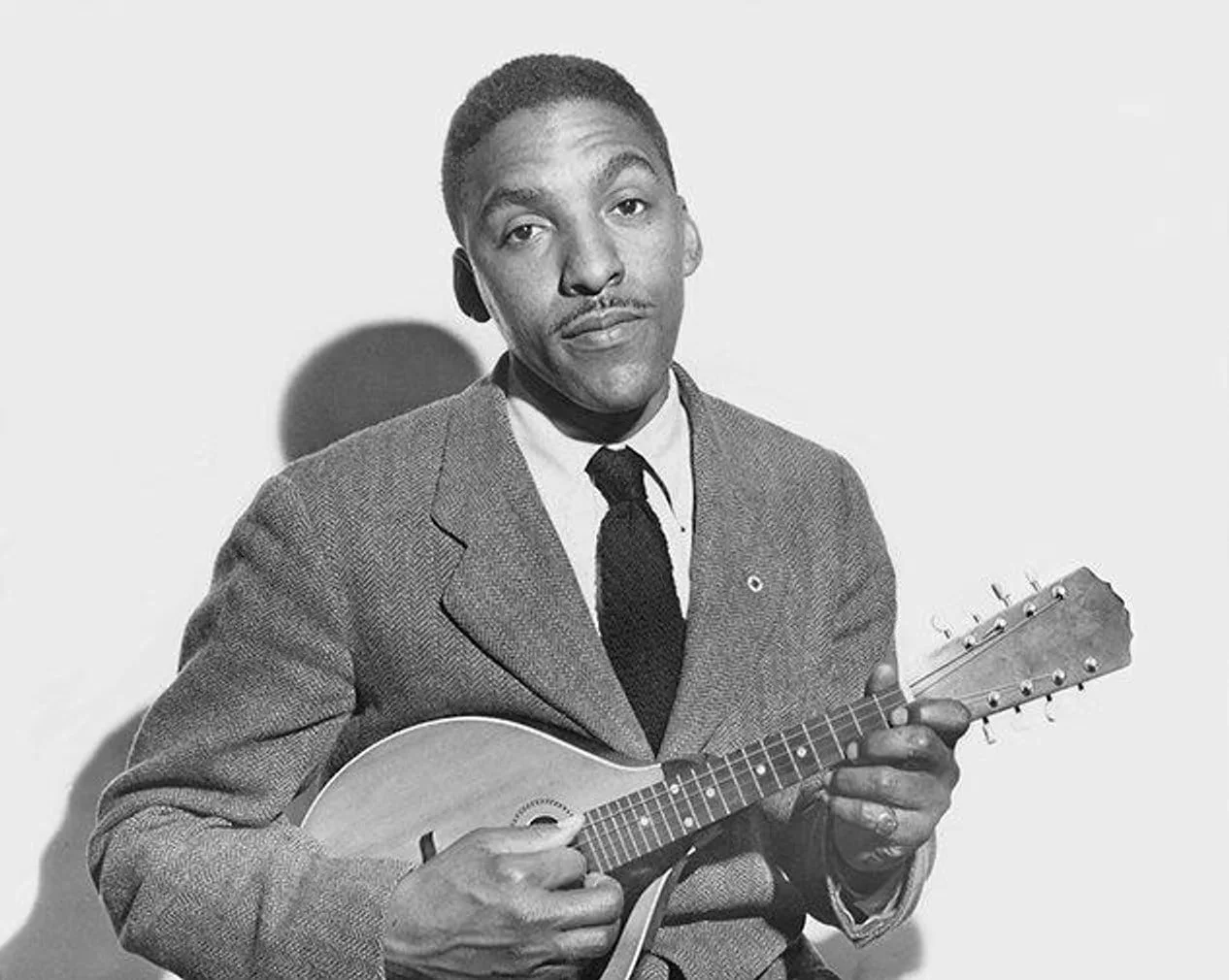*Please note: The exact date of this photograph is unknown.
Bayard Rustin is pictured with a lute he taught himself to play while imprisoned for his refusal to serve in the military during World War II. Despite the challenges of incarceration, Rustin used music to maintain morale and resist the oppressive conditions of a racially segregated prison system. His time in prison was marked by persistent activism against segregation and injustice within the prison walls.
Rustin spent over two years in prison during World War II as a conscientious objector, grounded in his Quaker faith and opposition to both the war and racial segregation. While incarcerated, he confronted the built-in system of racial segregation, repeatedly challenging the rules by sitting with white inmates and staging protests, including hunger strikes. His prison activism contributed to early civil rights efforts and helped shape his lifelong commitment to nonviolence, civil disobedience, and racial justice. Officials classified him as a "notorious offender" due to his disruptive resistance, yet his efforts foreshadowed later mass movements challenging segregation in America.
Advocate.com Editors. 2023. “Bayard Rustin’s Life and Civil Rights Legacy in Photos.” Advocate.Com, November 17, 2023. https://www.advocate.com/slideshow/2019/1/21/bayard-rustins-life-and-civil-rights-legacy-photos#rebelltitem3.

